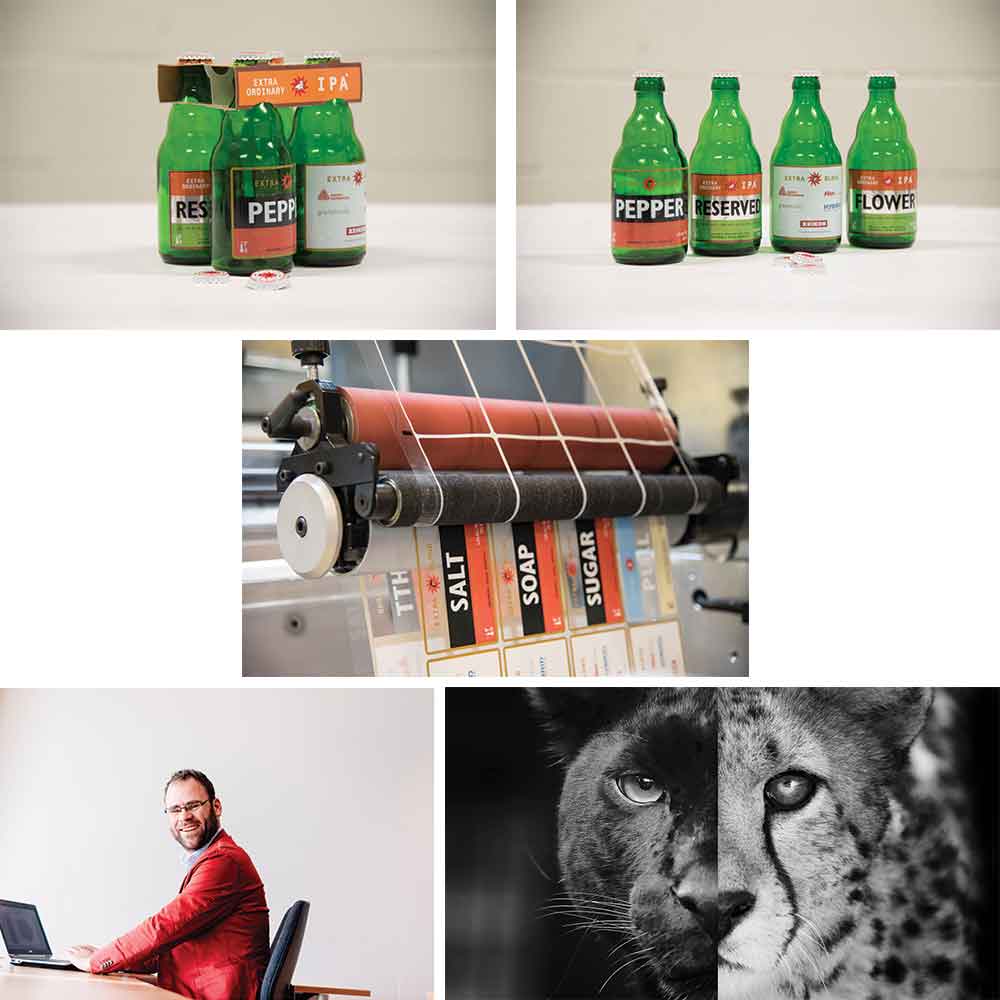
Not one label is the same – different applications require different digital technologies. Whether it is for pharma, wine & spirits, durables, health & beauty, industrial chemicals or beverages, every label comes with its own aesthetic and functional requirements. Which is why we are diving deeper into the characteristics of each of these labels in a series of blogs.
In this blog, n° 3 in our series, we focus on beer and beverage label printing, a niche of label printing that requires a specific approach in order to get the desired white opacity level and look & feel of the end product.
The no-label look, a capability provided by clear-on-clear label materials, has transformed beer labels into a strong growth market for the self adhesive label market, at the expense of wet-glue labels. The growth of the clear-on-clear adhesive labels is driven by the fact that they provide more capabilities regarding aesthetics, variation in look & feel etc. In the following paragraphs, we tell you exactly which digital printing technology is most optimal to achieve the best result with these labels.
Which beverage label type do you produce?
Beverage labels can be divided in two types.There are the craft beer labels, which are paper-based labels, with natural or coated paper facestock, commonly printed in 4-color. The other type are premium labels, for which clear-on-clear materials and BoPP facestock are typical and high white opacity is a requirement to make the color stand out.
Regardless of the type, Xeikon recommends both dry toner and UV inkjet printing technology. So how do you know which technology is best suited for a specific beverage label project? This choice depends on a number of factors – let me guide you trough them.
#1 Substrates
Two factors determine if a printing technology is suitable for a certain substrate: adhesion (if and how well the printed image stays fixed to the substrate) and pigment penetration (if and how well the ink or toner penetrates the substrate). For beverage labels, adhesion should be high in different conditions (in a refrigerator, outdoor, in an icebucket...), while pigment penetration should be avoided at all cost as this reduces color strength and implodes the color gamut.
The two common substrates consist of paper or BoPP facestock. Due to its chemical affinity dry toner is a great choice for both paper and BoPP facestock. It can be used without any coating or primer and still achieve goodadhesion and no pigment penetration. UV-curable inkjet, due to its low viscosity (6 times lower than UV flexo), can penetrate paper so it is recommended to use a primer. This will improve the UV curing process and ensure a proper image quality. For BoPP facestock you need to ensure a high enough surface tension to ensure a proper spread of the UV inkjet ink.
#2 White opacity
For premium beverage labels (clear-on-clear labels) a sufficient level of white opacity is required. The opacity of white is determined by the concentration of pigments, pigment particle size and the layer thickness that can be achieved. Dry toner scores well on both accounts as the technology allows for thick toner layers. White dry toner combines the highest pigment load with the largest particle size, offering white layers of an opacity that is higher than that of liquid toner, in a single pass.
For UV-curable inks used in single-pass inkjet systems, the pigment particle size should be small enough to avoid nozzle clogging. Also, the required viscosity of the inks does limit the maximum possible pigment load. However, inkjet inks are capable of achieving an opacity comparable to that of screen printing, provided the printhead features a low native resolution, producing a large-sized droplet, which allows for high ink lay-down.
#3 Look and feel
Dry toner gives a matte impression which, by applying a varnish, can give a glossy impression. When offset quality is required this technology is preferable. UV inkjet gives a very high gloss and tactile impression, which can appeal to certain people. The image details are not as sharp as dry toner but this is not necessarily a requirement (‘Beauty is in the eye of the beholder’). The appearance of both technologies is not influenced when the labels get in touch with the water (condense) on the outside of the bottle.




